 Image search results - "shrine" Image search results - "shrine" |
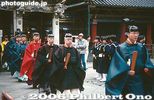
Also called "Sennin Gyoretsu" (1,000-person Procession 千人行列), this is Nikko's largest festival held on May 17-18. The highlight is a long procession of over 1,000 people dressed in various costumes.The three portable shrines are dedicated to the spirits of Tokugawa Ieyasu, Toyotomi Hideyoshi, and Minamoto Yoritomo. Photos start with May 17 at Toshogu Shrine, when priests gathered for a ceremony. 発興祭
|
|

Yasukuni Shrine is Japan's most prominent shrine for the war dead. Near Kudanshita Station on the Tozai Subway Line. This is the first giant torii
|
|

Hino's most prominent shrine is best known for the Hino Matsuri festival on May 2-3. The shrine was originally atop Mt. Watamuki, Hino's tallest mountain. It was moved to its present location in 796.
|
|
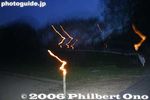
Held annually on May 4, the Misaki Shrine Fire Festival (hi-matsuri) has local people carry 2-meter long torches from their homes to the shrie where a 5-meter tall pile of bamboo is lit to make a towering inferno.A taiko drum is also carried and beaten.
|
|

Yasukuni Shrine during the Mitama Matsuri before dark.
|
|

Kanayama Jinja Shrine is a small shrine within the grounds of the Wakamiya Hachimangu Shrine near Kawasaki Daishi Station. On the first Sun. of April, it holds this now-famous Kanamara Festival nicknamed the Phallus or Fertility Festival. Festival starts at 11 am. But a large crowd was already there well before that time. Entrance to shrine on the day of the Kanamara Festival. (If you're below age 18, please leave now.)
|
|
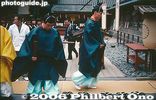
Prayer ceremony by priests
|
|

Path to shrine
|
|

Later the shrine became Lord Gamou's family shrine and it was revered by Hino merchants during the Edo Period. This is the Shrine grounds. Map
|
|
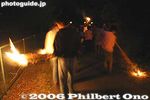
Procession of local residents carrying torches to the shrine. Map
|
|
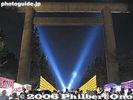
Yasukuni Shrine's main torii during Mitama Matsuri
|
|

Shrine banners and cherries in full bloomThe red banner says "Kanayama Jinja" with an phallus (erect) logo on the top.
|
|

The shrine also holds the Hino Matsuri on May 2-3.
|
|

In front of the portable shrine storehouse for the three mikoshi. A ceremony is held to transfer the spirits from the main shrine to the portable shrines. 神輿舎にて宵成渡御This building is right next to the famous Yomei-mon Gate at the Toshogu Shrine.
神輿舎にて宵成渡御
|
|
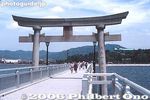
Torii on Takeshima island
|
|
|

Torii at Umamioka Watamuki Shrine in Hino, Shiga Pref.
|
|
|

Promenade to the shrine
|
|

Pumping (or humping) the...
|
|

Shinkyo Sacred Bridge, Nikko 神橋
|
|
|

Statue of Omura Masujiro (1824-1869) 大村益次郎, founder of Japan's modern army. Also pushed for the establishment of Yasukuni Shrine.
|
|

Stone bridge
|
|

The torch procession rings out.
|
|

Spotlights create a silhouette of the statue of Omura Masujiro (1824-1869) 大村益次郎, founder of Japan's modern army.
|
|

The festival is wildly popular with people from overseas.The shrine had various phallus props to pose with.
|
|
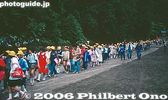
Kids on school trip along Omotesando 表参道
|
|

The three portable shrines (mikoshi) are then carried out of the storehouse to be taken to Futarasan Shrine.
|
|
|

Stone bridge
|
|

Towering inferno of bamboo on fire. The shrine has a 5-meter tall pile of bamboo which is lit to make a towering inferno within the shrine grounds. Very dramatic.
|
|

A bon dance around the base of the statue.
|
|

Haritsuna Shrine
|
|

Dickhead hat. Actually, I don't know what they call it, but that's what I call it.
|
|

A National Treasure and World Heritage Site, Nikko's magnificent shrines and temples overshadow any other attractions Tochigi has. The Toshogu Shrine is especially famous and also serves as Tokugawa Ieyasu's mausoleum. Omotesando 表参道
|
|
|
|

Second torii
|
|
|
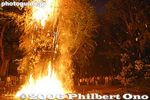
Misaki Shrine Fire Festival in Aisho. The shrine has a 5-meter tall pile of bamboo which is lit to make a towering inferno within the shrine grounds. Very dramatic. Also see the video at YouTube.
|
|
|
|

Sanko Inari ShrineThe shrine provides a short cut to the castle.
|
|

Entrance to garden via Tokiwa Shrine. One of Japan's three most famous gardens, Kairakuen is especially noted for thousands of plum blossom trees which bloom in Feb. and March.One of Japan's three most famous gardens, Kairakuen is especially noted for thousands of plum blossom trees which bloom in Feb. and March.
|
|

Carving daikon. Anybody can join in and carve. 大根削りLater to be auctioned off.
|
|
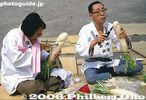
Carving daikon (old photo). These men were really good at carving the daikon.
|
|

Horse stable
|
|
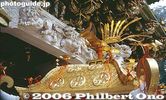
Passing under Yomeimon Gate.
|
|

You wash your mouth hands here. Built in 1940 by Japanese living in the US. 大手水舎
|
|

Mikoshi portable shrine
|
|
|
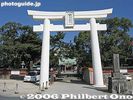
Karatsu Shrine
|
|
|

Tokiwa Shrine, MitoDedicated to Lord Mitsukuni Tokugawa, the second lord of Mito, and Nariaki Tokugawa, the ninth lord of Mito and the one who built Kairakuen Garden.
|
|
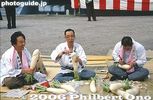
Carving daikon. Since some activities are conducted on the ground, the festival is also called Jibeta (Ground) Matsuri.Once upon a time, the festival was still mostly a local event with much fewer people.
|
|

Horse stable
|
|
|

Gate built in 1934. 神門
|
|

Rear view
|
|
|

Spotlights hit the torii.
|
|
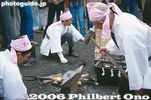
Forging a steel phallus (old photo)The demon living in the vagina of the women bit the man's phallus each time. So one guy made a steel phallus and the demom broke his teeth.
|
|
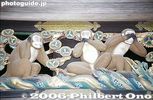
Hear, speak, and see no evilWood carving on the horse stable
|
|
|

Back view of second torii
|
|
|
|
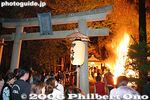
Torii at Misaki Shrine Fire Festival.
|
|

Chichibu Shrine
|
|
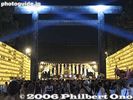
At night, 30,000 lanterns light up. A real summer spectacle.
|
|

Dedicated to Susano-O no Mikoto, Daiho Shrine is a short walk from JR Ritto Station. Main torii. MAP
|
|
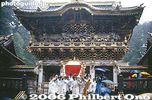
Coming down from Yomeimon Gate (National Treasure). 陽明門The gate is a National Treasure and symbol of Nikko.
陽明門
|
|

Five-story pagoda 五重塔
|
|

Imperial crest on gate door
|
|

Imamiya Ebisu Shrine is dedicated to Ebisu, one of the Seven Gods of Good Fortune, representing business prosperity. On Jan. 9-11 (centering on the 10th), the shrine holds one of Japan's largest Toka Ebisu festivals to pray for good business. The festival is perhaps Japan's most commercial festival where souvenirs and trinkets for business prosperity are sold. Photo: The road from the subway station to the shrine is decorated.
|
|

Nagahama Hachimangu Shrine torii on New Year's Day. Nagahama's most popular shrine for New Year's worship (hatsumode). MAP
|
|
|

Sumiyoshi Shrine is on the west side of JR Moriyama Station. This side has an area called "Fuke" written with the same kanji for "uwaki" (cheating on your partner).I wonder what married couples think of living in this area...
|
|
|
|
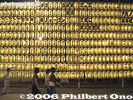
The lanterns are lit by lightbulbs, not candles.
|
|

Held during Aug. 3-5 at Taga Taisha Shrine, the Mantosai or 10,000-Lantern Festival is a night festival when numerous lanterns are lit within the shrine grounds. The lanterns are for the repose of ancestral spirits.
|
|

Oarai Isosaki Shrine's giant torii
|
|

Standing room only at Wakamiya Shrine
|
|

Way to Tagata Shrine from Tagata Jinja-mae Station. Shrine famous for numerous phallic objects used as offerings to the gods. The 1500-year-old shrine worships a deity called Tamahime-no-Mikoto who was a daughter of a powerful local lord from the 5th c.The Honen-sai or Honen (Hounen) Matsuri is held by Tagata Jinja on March 15 to pray for an abundant harvest. "Honen" literally means "Year of abudant harvest." Since a giant penis is used as an offering, it is popularly called the "penis festival."
The shrine is near Tagata Jinja-mae Station on the Meitetsu Railways' Komaki Line. From Shin-Nagoya Station or Shin-Gifu Station, go to Inuyama Station and transfer to the Komaki Line.
|
|
|

Oriental zodiac (hare) carving on five-story pagoda
|
|
|
|

Path near the shrine is filled with street stalls selling Ebisu decorations and charms.
|
|
|

Sumiyoshi Shrine torii. Notice the torches inside the shrine. 住吉神社 MAPEvery Jan., both this shrine and Katsube Shrine light giant torches for the festival's climax. Unfortunately, you cannot see the festival at both shrines since they are held around the same time. Sumiyoshi Shrine's fire festival is smaller with fewer (six) torches which represent the head of the slain dragon.
|
|
|
|
|

Taga Taisha Shrine torii near Taga Taisha-mae Station. MAP
|
|

Oarai Isosaki Shrine's giant torii
|
|

Packed path to Wakamiya Hachimangu Shrine
|
|

A group of men carry a red and white pole in front of Inazawa Station, on their way to Konomiya Shrine.
|
|

Festival spectators come by the busload, including people from US military bases such as Yokota.
|
|

Tagata Shrine torii and entrance 田縣神社
|
|
|
|
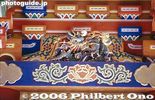
Oriental zodiac (dragon) carving on five-story pagoda
|
|

Cherry blossom path to shrine
|
|

Ebisu decorations
|
|

Path to shrine with stone lanterns, and cars.
|
|
|

Sumiyoshi Shrine and the six giant torches.
|
|

Taiko drum beating
|
|

Tanabata streamers festoon the gate.
|
|

Road to Taga Taisha Shrine
|
|

Oarai town
|
|

Prayers to the Kanamara Boat portable shrine かなまら舟神輿 神輿御霊入れ式Before the portable shrine is taken out to be paraded around town, the god of the shrine must be transferred to it. This is what the head priest is doing.
There are three portable shrines (called mikoshi). The Kanamara mikoshi (the original portable shrine), Kanamara-bune mikoshi (shaped like a boat), and Elizabeth mikoshi (pink giant). All three are carried during a procession around town. The Elizabeth mikoshi is carried by she-males. ("New half" in Japanese. Go ahead and laugh if you want.)
|
|

Raising a pole in front of Inazawa Station
|
|

Entering Tagata Shrine, dedicated to Tamahime-no-Mikoto (daughter of a local feudal lord) and Mitoshi-no-Kami (deity of harvests).
|
|

Tagata Shrine stone marker
|
|
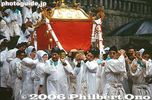
A short path leads to Futarasan Shrine.
|
|
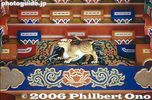
Oriental zodiac (tiger) carving on five-story pagoda
|
|
|
|

Stone lanterns
|
|

Garden
|
|

Sumiyoshi Shrine and the six giant torches.
|
|
|
|

Homes along the way are decorated.
|
|

Oarai Isosaki Shrine torii at sea
|
|

Prayers to the Kanamara-bune mikoshi かなまら舟神輿Before the portable shrine is taken out to be paraded around town, the god of the shrine must be transferred to it. This is what the head priest is doing.
|
|

Raising a pole in front of Inazawa Station
|
|

Various entertainment is staged within Tagata Shrine up until the procession starts at 2 pm.
|
|

Mikuji paper fortunes for love and romance, marriage, and childbirth.
|
|

Niomon
|
|

Passing under the torii at Futarasan Shrine. 二荒山神社二荒山神社
|
|

Noh stage and the cherry tree used as the barometer for Tokyo's cherry blossom blooming condition.
|
|
|
|

Senryo Matsu pine tree千両松
|
|

Side view of torches.
|
|

Fire finally dies down.
|
|

At 6:30 pm, a mikoshi portable shrine was paraded along the promenade.
|
|

Near the shrine entrance are the usual food stalls.
|
|

Oarai Isosaki Shrine torii at sea
|
|

The shrine's head priest transfers the deity to the Kanamara Boat portable shrine (boat-shaped loaded with a phallus) かなまら舟神輿Before the portable shrine is taken out to be paraded around town, the god of the shrine must be transferred to it. This is what the head priest is doing.
|
|
|

Schedule of events and procession route. In odd-numbered years (like 2007), the procession starts from nearby Kumano-sha Shrine. In even-numbered years, the procession starts from Shinmei-sha Shrine.
|
|

Tagata Shrine Honden main hall. Komaki, Aichi Pref.
|
|
|

Passing under the torii at Futarasan Shrine. 二荒山神社二荒山神社
|
|

Yasukuni Shrine, Torii and Haiden hall
|
|

Torii and entrance to Imamiya Ebisu Shrine
|
|

The shrine grounds was filled with cars on New Year's Day. Apparently, the shrine has no parking lot.
|
|

Painted (and fading) wooden tablets
|
|

Head of torch. Different shape from Katsube Shrine's torches.
|
|
|
|
|
|

Oarai Isosaki Shrine torii at sea
|
|

A representative of the shrine parishioners offer prayers.
|
|

They zig-zag along the street, and they are filled with sake.
|
|

People line up to rub the sacred balls. Penis rock in the foreground.
|
|

Tagata Shrine Honden main hall which worships shrine worships a deity called Tamahime-no-Mikoto who was a daughter of a powerful local lord from the 5th century.
|
|
|
|
|

Yasukuni Shrine, Haiden hall. After the Class-A war criminals (such as Hideki Tojo) were enshrined here, the late Emperor Hirohito (Showa) never worshipped here again. 拝殿
|
|

Imamiya Ebisu Shrine
|
|

Another entrance to the shrine
|
|

Painted (and fading) wooden tablet
|
|

Torch stem
|
|

Lantern
|
|

Hachimangu Shrine torii
|
|
|

Welcome to Taga
|
|

Torii at sea
|
|

Prayers to the Elizabeth portable shrine エリザベス神輿Before the portable shrine is taken out to be paraded around town, the god of the shrine must be transferred to it. This is what the head priest is doing.
|
|
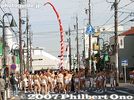
Every once in a while, they raise their pole.
|
|

Sacred Balls. Put in money and rub the left and right ball for family safety, business prosperity, safe childbirth, etc. 珍宝窟
|
|

Torii to Oku-no-miya Shrine, next to the Honden main hall.
|
|

On Aug. 15, the anniversary of Japan's surrender and the end of World War II, Yasukuni Shrine is a busy with worshippers and police. These are police buses.
|
|

Police bus.
|
|

From Kudanshita Station to the first torii, the path is jammed with political activists not even related to the war or shrine.
|
|

Rising Sun flag
|
|

On Aug. 15 at Yasukuni Shrine, you can see former soldiers and nationalists dressed in military uniform marching in the shrine.
|
|
|
|
|

On Aug. 15 at Yasukuni Shrine, you can see former soldiers and nationalists dressed in military uniform marching in the shrine.
|
|
|

On Aug. 15 at Yasukuni Shrine, you can see former soldiers and nationalists dressed in military uniform marching in the shrine.
|
|
|
|
|
|

They march up to the end of the line of worshippers lined up to pray at the shrine. Then they turn around and head back.
|
|
|

Worshippers at Yasukuni Shrine on Aug. 15.
|
|

Worshippers at Yasukuni Shrine on Aug. 15.
|
|
|

Worshippers at Yasukuni Shrine on Aug. 15.
|
|

Praying at Yasukuni Shrine on Aug. 15.
|
|
|

Heavyweight judo Olympic gold medalist Satoshi Ishii (石井 慧) was also at Yasukuni Shrine on Aug. 15, 2009. He was very kind and signed autographs, shook hands, and took photos with a lot of people.
|
|
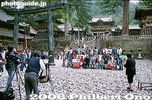
Group photo
|
|

Entering Futarasan Shrine's Haiden Hall. All three portable shrines are taken to this hall. 二荒山神社 拝殿
|
|
|
|
|
|
|

Straw-covered torches.
|
|

After the bon fire, the taiko drum procession leaves the shrine and parades around the village.
|
|

Hachimangu Shrine torii
|
|
|
|

Taga Taisha Shrine torii
|
|

Shoreline
|
|

Waving the sacred sakaki branch to bless all of us
|
|
|
|
|

Stones and Oku-no-miya Shrine
|
|
|
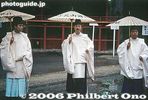
Priests on a rainy day.
|
|
|
|
|

Shakunage or rhododendron
|
|

Torches are bunched together.
|
|
|

Hachimangu Shrine
|
|
|
|

Mantosai sign under the torii
|
|

Isosaki Shrine torii as seen from the beach
|
|
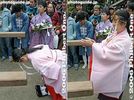
Prayers to the Elizabeth portable shrine エリザベス神輿Before the portable shrine is taken out to be paraded around town, the god of the shrine must be transferred to it. This is what the head priest is doing.
|
|

On the straight road from Inazawa Station to Konomiya Shrine.
|
|

Torii gate to Kumano-sha Shrine.
|
|
|

The spirits of Tokugawa Ieyasu, Toyotomi Hideyoshi, and Minamoto Yoritomo in the three portable shrines are then transferred to Futarasan Shrine. The mikoshi spend the night here.
|
|
|
|

Imamiya Ebisu Shrine, Osaka
|
|

Haiden hall 拝殿
|
|

Toward the exit
|
|
|
|
|

Hachimangu Shrine. Do not climb on the horse.
|
|
|

Arched bridge leading to shrine gate.
|
|

Isosaki Shrine's second giant torii
|
|

Elizabeth portable shrine エリザベス神輿Before the portable shrine is taken out to be paraded around town, the god of the shrine must be transferred to it. This is what the head priest is doing.
There are three portable shrines (called mikoshi). The Kanamara mikoshi (the original portable shrine), Kanamara-bune mikoshi (shaped like a boat), and Elizabeth mikoshi (pink giant). All three are carried during a procession around town. The Elizabeth mikoshi is carried by she-males. ("New half" in Japanese. Go ahead and laugh if you want.)
|
|
|

Kumano-sha Shrine, the starting point of the procession or "Penis Parade." 熊野社
|
|

This is what you see inside Oku-no-miya Shrine. A giant wooden phallus offering.
|
|

Path to shrine
|
|

Dragon on ceiling that squeaks when you clap.
|
|
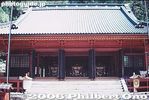
May 18: At 10:35 am, the spirits are transferred from Futarasan Shrine back to the portable shrines.Futarasan Shrine's Haiden Hall.
二荒山神社 拝殿
|
|
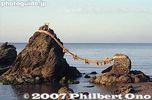
Meoto-Iwa Wedded Rocks off the coast of Futami-cho, Ise city, Mie Prefecture. 夫婦岩
|
|

One of the giant spotlights used to accent the mikoshi, torii, and night sky.
|
|

Noh stage
|
|

A giant umbrella serves as the roof.
|
|

Ice sculpture of two rats. 2008 is the year of the rat.
|
|

Nezu Station (Chiyoda Line) platform. Just follow the sign to get out the correct exit. 根津駅
|
|
|
| 7447 files on 30 page(s) |
1 |
 |
 |
 |
 |
|